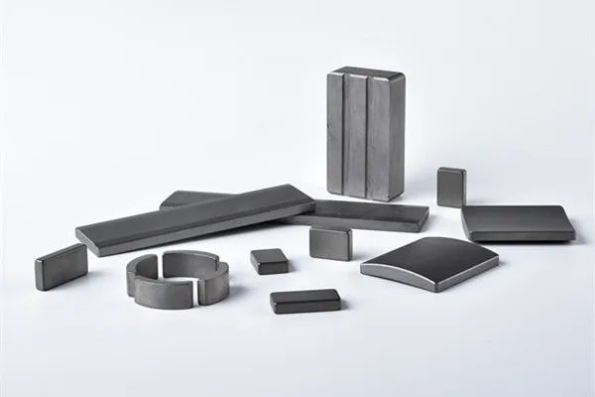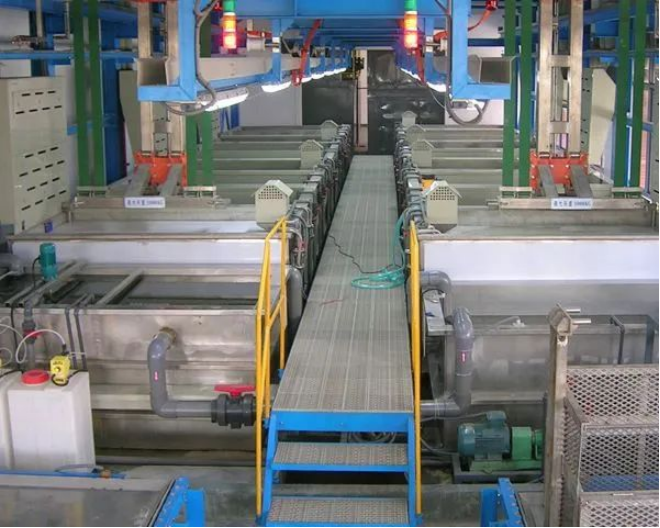The role of surface protection for neodymium-iron-boron permanent magnets includes three aspects:
1. Improve the corrosion resistance of NdFeB. Various surface protection methods can resist corrosion from humid environments, acids, alkalis, salts, and harmful gases.
2. Thoroughly clean the magnet surface, such as removing loose magnetic particles, to form a smooth surface and prevent loose magnetic particles from affecting functionality or damaging the magnetic system.
3. Operational protection, preventing magnetic particles from falling off during assembly or operation.
In previous articles, Dongci Emperor has detailed several common surface treatment methods for neodymium-iron-boron, such as phosphating, electroplating, electrophoresis, and vapor deposition. Today, let's talk about passivation.

Similar to phosphating, neodymium-iron-boron passivation forms a protective film on the magnet surface through chemical methods to achieve the purpose of corrosion prevention for the magnet.
Surface chemical conversion film technology is a commonly used means of surface treatment. At present, the chemical conversion film treatment on the surface of neodymium-iron-boron mainly adopts phosphating technology, mostly zinc-based or iron-based phosphating. The phosphating film itself has poor corrosion resistance and often does not independently assume the role of corrosion prevention, but is used as an outer layer of composite corrosion prevention in conjunction with electrophoresis and coating.
At the same time, the phosphating process uses a large amount of phosphoric acid and phosphate compounds, which are prone to phosphorus pollution, causing adverse consequences such as eutrophication of water bodies, and the production process is not environmentally friendly. Compared with phosphating agents, passivators have a simple composition and do not contain phosphoric acid and phosphate compounds, making them more environmentally friendly.

The general process flow for NdFeB passivation is: degreasing → water washing → ultrasonic water washing → pickling → water washing → ultrasonic water washing → pure water washing → pure water washing → passivation treatment → pure water washing → pure water washing → dehydration → drying.
Degreasing
Degreasing can only remove grease, dust, sweat stains, and attached metal chips on the surface of neodymium-iron-boron, but cannot remove rust on the magnet. The oil stains on the surface of neodymium-iron-boron come from the material processing process, such as anti-rust grease used for rust prevention during storage and transportation, cutting fluid in contact with parts during cutting processing, etc.
Before further surface treatment of neodymium-iron-boron, the oil stains on the surface must be cleaned, otherwise the quality of surface chemical conversion, electroplating or coating will be affected. Due to the wide sources, variety of oil stains, and great differences in pollution levels, the problem of degreasing is very complex. In order to avoid corrosion and subsequent residues during degreasing, try to use degreasing agents with low free alkalinity and total alkalinity.
Pickling
The purpose of pickling is to remove residual black ash and rust on the surface of neodymium-iron-boron. The pickling solution generally uses 2%~4% nitric acid, and the time is 0.5~2.0 minutes. High acid concentration and too long pickling time are harmful to the magnet.
Passivation
The passivation treatment method is to place the magnet in a container containing a passivator, soak or spray it for a period of time, or use the magnet as an anode for polarization, so as to form a passivation film on its surface. As an important surface anti-corrosion treatment method, passivation is widely used in many metals, especially aluminum, zinc, cadmium, tin, magnesium and their alloy materials.
Traditional passivation treatments mostly use chromic acid and chromate as treatment agents, called chromate passivation. The chromate conversion film formed on the metal surface after treatment has a good anti-corrosion protection effect on the base metal. As a separate protective film, passivation treatment is simple, practical and low-cost, and was widely used in the early development of neodymium-iron-boron. However, its fatal weakness is that it contains toxic chromium Cr (Ⅵ), which is harmful to the human body and the environment, prompting people to actively carry out research on effective alternative technologies. In recent years, there have been many passivator patents in China. One kind of neodymium-iron-boron magnet passivator includes oxalic acid, surfactants and complexing agents. Its composition is simple, and it has the functions of degreasing, derusting and passivation at the same time. Moreover, it does not use phosphoric acid and phosphate compounds, making it a more convenient and environmentally friendly neodymium-iron-boron magnet passivator.

In recent years, the requirements for the corrosion resistance of neodymium-iron-boron conversion films have become higher and higher. A single passivation technology has been difficult to meet the requirements. The commonly used process is to adopt composite conversion film technology, that is, phosphating first and then passivation. By filling the pores of the phosphating film, the corrosion resistance of the composite conversion film is effectively improved.











